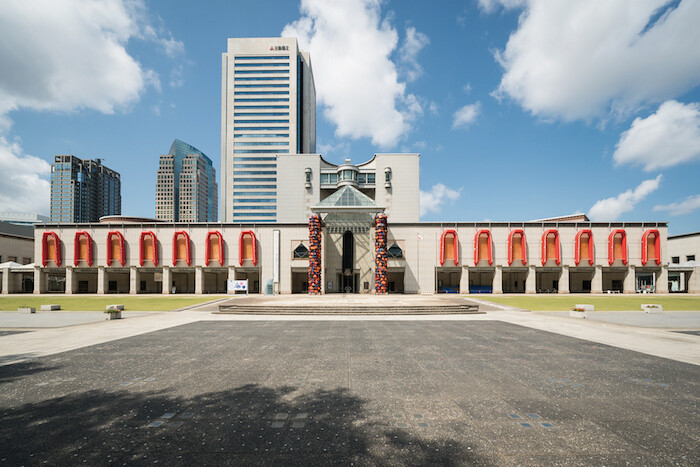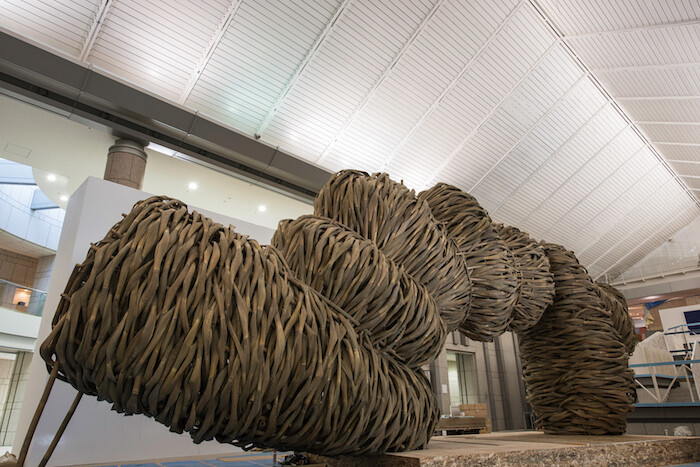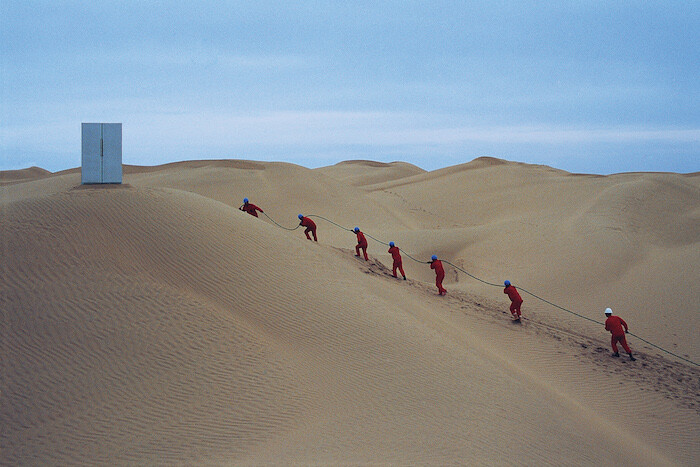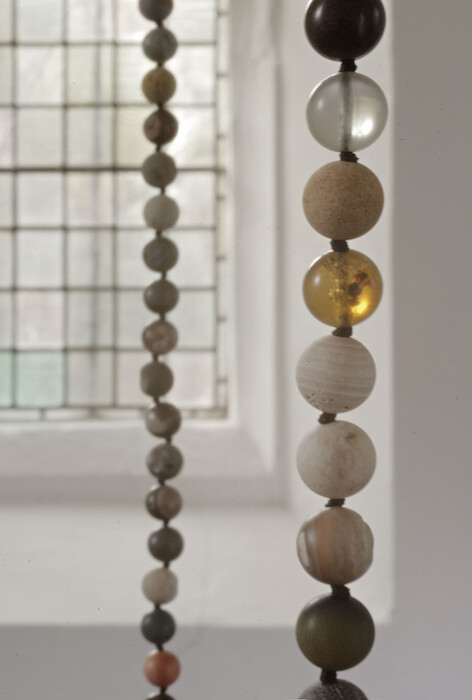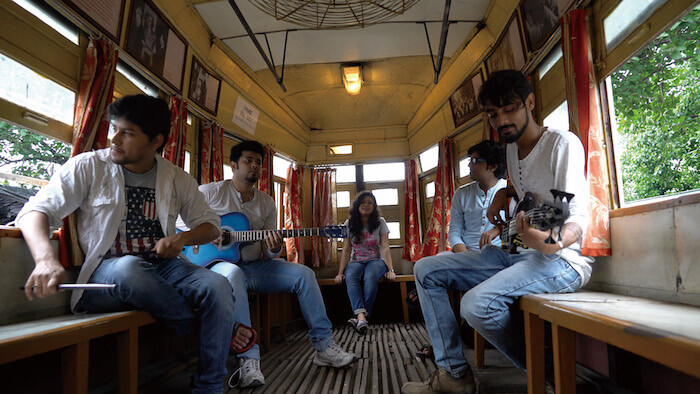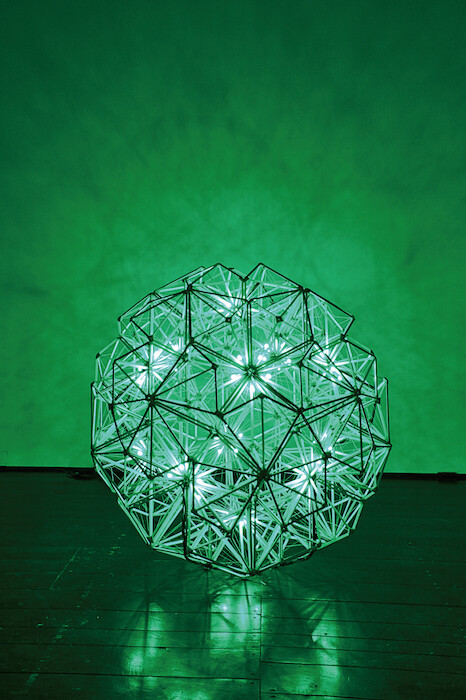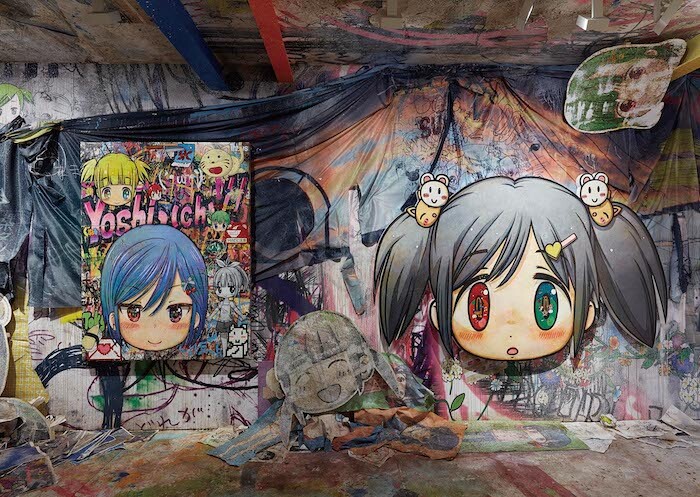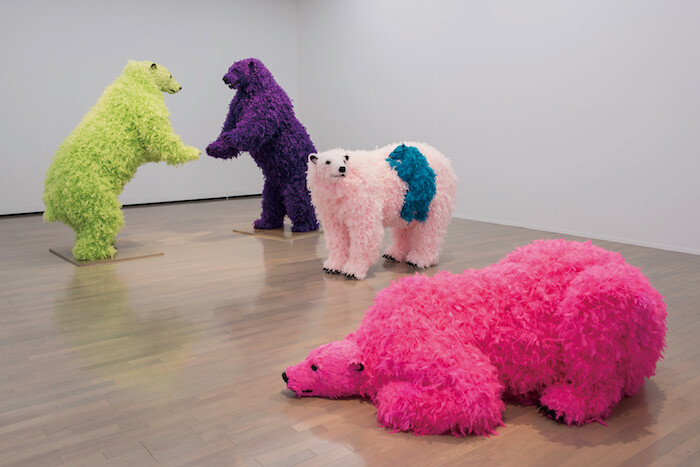The city of Yokohama blends almost seamlessly into Tokyo, forming one of the largest and most disaster-prone urban agglomerations in the world. But there are subtle differences between Yokohama and its northern neighbor—the smell of the Pacific, the quiet, moat-like boulevards—and major ones: this is where Western modernity breached the wall around “traditional Japan.” Coerced into trading with the West by the arrival of American warships led by Commodore Perry in 1853, the opening up of the island nation turned Yokohama from a quiet fishing village into a noisy port town. So it makes sense that an art festival—a machine for generating contemporaneity—emerged here in 2001, as Japan entered a new century.
The sixth edition of the Yokohama Triennial, titled “Islands, Constellations and Galapagos,” opened on August 4 at the Yokohama Museum of Art and three nearby sites. The event includes 38 artists and groups, with a significant contingent of Japanese names. New productions include East Java-based Joko Avianto’s The border between good and evil is terribly frizzy (2017), a large braided-rope-style sculpture woven from 2,000 pieces of bamboo, and Yukinori Yanagi’s updated Project God-zilla (2017) assemblage installed in the basement of the Yokohama Port Opening Memorial Hall. Other commissions, especially those in the second main site, Red Brick Warehouse No. 1, address Yokohama itself, such as Christian Jankowski’s wry Massage Masters (2017) videos, which show the city’s public statues being massaged by six professional physical therapists. There is older work, too, such as Ai Weiwei’s large-scale installations of migrant boats and lifejackets on the museum’s facade (Safe Passage and Reframe, both 2016); Chinese artist Zhao Zhao’s multichannel installation showing a refrigerator being installed in a desert (Project Taklamakan, 2016); Olafur Eliasson’s Green light—An artistic workshop (2016); and conceptual artist Katie Paterson’s Fossil Necklace (2013), made with 170 stones from different periods in Earth’s geological history crafted into beads.
Once muscular, the Triennale has shrunk in size and stature over the past decade. In an interview I conducted with co-director Akiko Miki shortly after the festival opened, she expressed her “reservations about prioritizing scale” and used this as an opportunity to focus on presenting multiple works by a more concentrated group of artists. This focus allowed photographer Naoya Hatakeyama to show two series of images that gain power when placed in close proximity to each other. He paired small photos of mounds from coal mines in France such as Terril #02607 (2009) with a collection of quiet, disturbing panoramas and landscapes showing post-disaster earthworks in his hometown of Rikuzentakata. The town was almost completely destroyed in the Tōhoku earthquake and tsunami in March 2011, a disaster that also appears in a series of watercolor landscapes by Natsumi Seo (“Voices from the landscape—a town beside the sea,” 2011-2017), and is mirrored in many other works that indirectly address our current precarity. “We may look at 2017 as one of the turning points in history,” says Miki, “in which many people are feeling anxious of their uncertain future.”
Even the Triennale itself is implicated in this uncertainty—structural changes have affected it since 2011, when organization of the festival was partially taken over by the City of Yokohama, which has nested the event in an urban development plan. Some feel that Japan’s healthier and more relevant art festivals are now located elsewhere, far from Yokohama or Tokyo. But perhaps these changes also allowed the large curatorial team—including Miki, artist Rirkrit Tiravanija, historian Shuji Takashina, M+ Museum director Suhanya Raffel, and Yokohama Museum of Art directors Eriko Osaka and Tomoh Kashiwagi, among others—to take some risks.
At times, the event seemed curated by a multitude of voices, with unexpected shifts in tone. At other moments, the works appeared to be forging secret thematic alignments, distinct from the overarching direction of the festival. Perhaps the goal was not to create a smooth, flashy event, but a challenging, lumpy display of unruly complexity, with theme(s) operating like archipelagoes, sometimes at odds with each other and the art. Miki says the team wanted to avoid “listening to a single strong voice” by adopting a multifaceted approach, which, she believes, is a “much needed” response to the current state of the world. Loud, spectacular voices, like Weiwei’s, fell flat. Minor voices, like that of Takashi Murakami’s former protégé Mr., were amplified. His manga-inspired, sexualized depictions of young girls (such as 15 minutes from Shiki-station, 2003, showing a young girl standing next to a naked man with an erection) were presented as representations of the “insularity of Japanese society” and “the invisible borders and isolation within,” according to Miki. It was hard to tell whether “isolation” was meant to be pejorative in this context, and this kind of confusion felt deliberately embedded elsewhere in the festival—it was clear that organizers wanted to dance with complex, multifaceted ideas.
Mr.’s work is an example of how the curatorial team mapped the key themes of the Triennale—connectivity, isolation, coexistence, and diversity—onto social, cultural issues: Brexit, rising populism, the visibility of hate groups, or the efficacy of a networked society. Instead, many works seemed to dialog with the more-than-human world, especially the land itself and the things—new needs, hierarchies, boundaries, hopes and fears—that are generated in a landscape of risk. Alex Hartley presented his Nowhereisland project (2011–ongoing), inviting citizens to visit the unmapped Arctic island he “discovered” after an ancient glacier retreated. Propeller Group’s Tuan Andrew Nguyen made a melodramatic 42-minute film about the end of the world and Pulau Bidong, an island near Malaysia that refugees fled to during the Vietnam War (The Island, 2017). The mood soured, appropriately for an art festival in 2017, with works that located the human deeper inside nature. Mark Justiniani produced two installations that used mirrors to turn mine shafts—the holes that modernity crawled out of—into infinite regresses that ended in abysses (Tunnel, 2016). Oliver Chanarin created 42 drawings in a series titled Wave Directions in the Mediterranean Today (2017), suggesting horrible unions between the tilt of the planet and migrants’ desires. In the Red Brick Warehouse No. 1, artist group Chim↑Pom installed VR headsets made from mandarin boxes, construction helmets, and other detritus that allowed visitors to view 360-degree videos of the group show they initiated, entitled “Don’t Follow the Wind,” currently being held in the most irradiated zone of Fukushima. The exhibition will be opened to the public centuries hence, whenever—if ever—the zone is deemed safe to re-enter.
Chim↑Pom’s work in Fukushima is one of many at the Triennale that problematizes Japan’s relationship to aftermath, and the efficacy of making art about disaster—particularly in a country where the lines between representation and lived experience have become so blurred. What does it mean to produce work about nuclear meltdowns when they are still representing themselves across the country through marked bodies and landscapes? And, beyond Japan, what does it mean to make work about other crises that are just as representational? Weeks after the Yokohama Triennial opened, North Korea fired a ballistic missile across Japan and tested a hydrogen bomb; on other sides of the planet, cities in South Asia and America sank in floodwaters, turning streets to rivers and rooftops to urban archipelagos.
In this space of change, the difficulty, for Miki, is how to avoid “being consumed by the demand for the spectacular.” Contemporary art “needs to stay put,” she says. The best works in this vulnerable Triennale lingered long in the uncomfortable space of our “new normal”—a time of being too wet and too dry, of strandings and relocations, of anxieties and upheavals. But they didn’t only “stay put,” they tunnelled down, deep into the ground.
